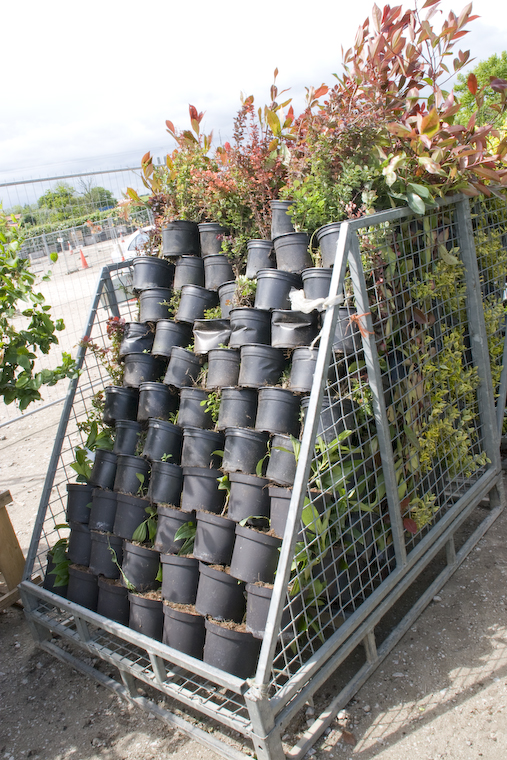Transport costs rising for your agricultural operation?
Look to what a venerable nursery stock operation is doing in England.
Johnsons of Whixley one of the largest nursery stock producers in England has six growing grounds in northern England with nearly 3 million plants and 2000 varieties in production at any one time. It is the largest producer of specimen plants in England; up to 80 liter specimens are produced. Plants are sold and transported by a dedicated fleet of trucks all over England. England and Europe in general have had much higher diesel and gasoline prices than in the United States for many years, and this has forced them to be very conscientious about fuel costs for transport of nursery stock.
I visited their primary production nursery near York when I was on a study leave last year. John Richardson, the nursery’s principle manager, has developed an innovative transport system that maximizes the density of packing and transport of nursery stock. See attached photograph. The system uses a custom made metal “cage” where container stock can be literally stacked and packed together. The cage can be lifted and moved with a forklift. The cages stack in trucks that are designed to specifically handle them.
Indeed there are limitations to this method. The first being that only plants that could tolerate such packing without damage would be suitable. This nursery is only caging those woody tree, shrub, and conifer species that can tolerate this practice. Their customers sometimes tolerate some plant imperfections after shipment, but support this practice because of large transportation cost savings.
For some of you this packing practice may seem a bit extreme or at least not suitable for the species you produce or for your market. For you, this transport method used by a mainstream successful nursery business in England, should remind you of an important concept to think about in our present—and future-- situation with high transport costs. The number of units per volume, or density can be very important in the cost of transport. Think about it. How can you be more efficient in the packing and the transport of your product?



